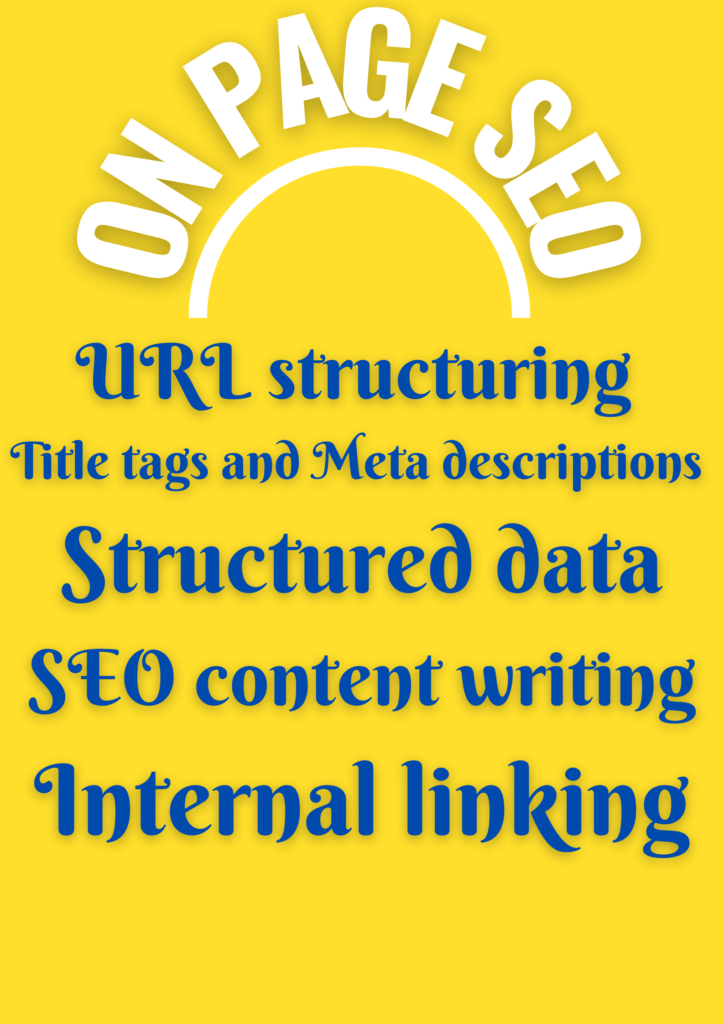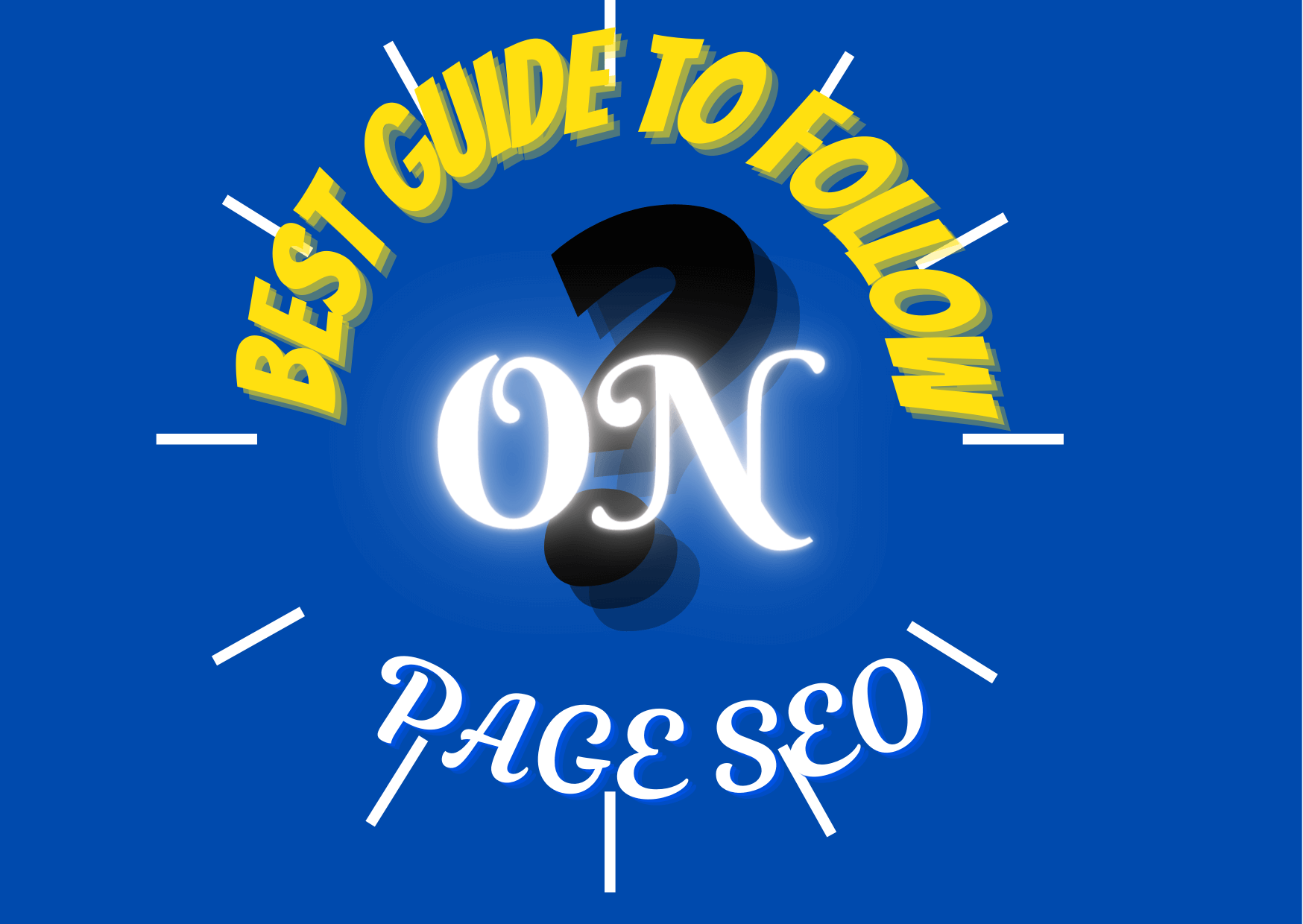What is onpage SEO? Best Guide to Follow 2022
What is onpage SEO?
Optimizing your webpage for search ranking is Onpage SEO; it’s the practice of optimizing web pages to improve search visibility and traffic. On-page optimization includes title tags, headings, content, image optimization, URL structuring and internal links.
Importance of onpage SEO
Search engines understand the importance of your website content to a searcher’s query. Optimize your website for smart queries. Search engine check the relevancy of the keyword in your website content and shows to the searcher. Targeted keyword must be in title, headings, content, image and in URL. Backlinking is the main factor for ranking.

URL structuring
Structuring the url is key part of onpage seo.
Try to avoid
- Adding numbers as URL
- Meaningless characters
- Full length title in URL
- Full capital letter
- Soft 404
Try to
- Include main keyword in your URL
- Use real words
- Use URL structure should be short and easy for both search engines and users to understand.
- Use hyphens between words:
- URLs must be readable by everyone
- Add Title tags and Meta descriptions
- Canonicalize your URLs
- Use 301 redirect for broken URLs
- Use Proper 404
Title tags and Meta descriptions
Title tags and meta descriptions is most important onpage seo factors. Include our keyword in title and description that shows up in search, both are important to help search engines and users to understand the purpose of a page.
Depends on Google’s latest update title is a best onpage SEO ranking factor and Meta descriptions are not. That means searcher’s query must be in title and that keyword should be somewhere in the website content. That will be shown in search. It is not important that keyword must be in Meta descriptions.
When both the title and Meta description are optimized, it increases the Click-Through Rate (CTR) which shows means you get more traffic.
Follow these steps:
- Place primary keyword in title.
- Keep the title around 60 to max 70 characters
- Avoid all caps in title.
- Give each page a matchless title.
- Write unique catchy titles that improve CTR
- Include main keyword in meta description with maximum 160 characters.
- Use modifiers like “best”, “guide”, “checklist”, “fast” and “review” in title
Structured data
Structured data helps Google to understand your content even better, because of this enhancement feature total Google search click dropped to 33%. Structured data retrieve data from your website that helps the user to jump from reading the entire article.
Types of Structured Data
Structured data is specific on-page SEO code you put on your pages that helps Google understand the content.
- Books
- Articles
- Movies
- Courses
- Ratings
- Events
- Local business info
- Star ratings
- Recipes
- Job postings
SEO content writing
Best practise for SEO content writing is finding the keyword and write article based on that keyword. Include main keyword once in the first 100-150 words of your article. They also enhance your content marketing for users. Write article for user not for the search engine. Try to avoid skyscraper technique. Create simple and easy to understand content. Use targeted keyword earlier. Google that it’s the primary topic of your page and also tells users they’re in the right place.
Use multiple header tags (H1, H2, H3, etc.) on your pages that will helps with SEO in several ways. Make use of questions in header tags that help both user and search engine effectively fetch. Multiple headers help users quickly grab the content, which improves overall user experience.
Does keyword density help on-page SEO?
Keyword density refers to how often you use a specific keyword on a web page. If target keyword appears five times in 100 words on a page, your keyword density is 5%.
Don’t try to include your targeted keyword intentionally in your article, make sure your target keywords appear naturally throughout your post.
Apart from primary keyword include synonyms, long-tail keywords, and related terms that could help your page rank.
To make your text readable:
- Use headers and subheadings.
- Avoid long Para of text.
- Use bullet points.
- Incorporate supporting images and other visuals.
Internal linking
Internal linking is the best way to reduce bounce rate. This will help Google understand the relationship between pages on your site. Also internal links help people to discover more of your content. Create Anchor text that will help you to add internal links.
Image optimization
Images optimization is another part of onpage SEO. Include targeted keyword in alt text is a best practice. For descriptive file names you should have to separate words by hyphens. Optimize the file size so that it loads quickly while still maintaining the quality of the image. Don’t use large size image file it results high loading time that increases the bounce rate.
These finding will work apparently how it is applied. Don’t follow SEO blog blindly. It’s my experience I don’t know whether it’s going to work for someone.








Leave a Reply